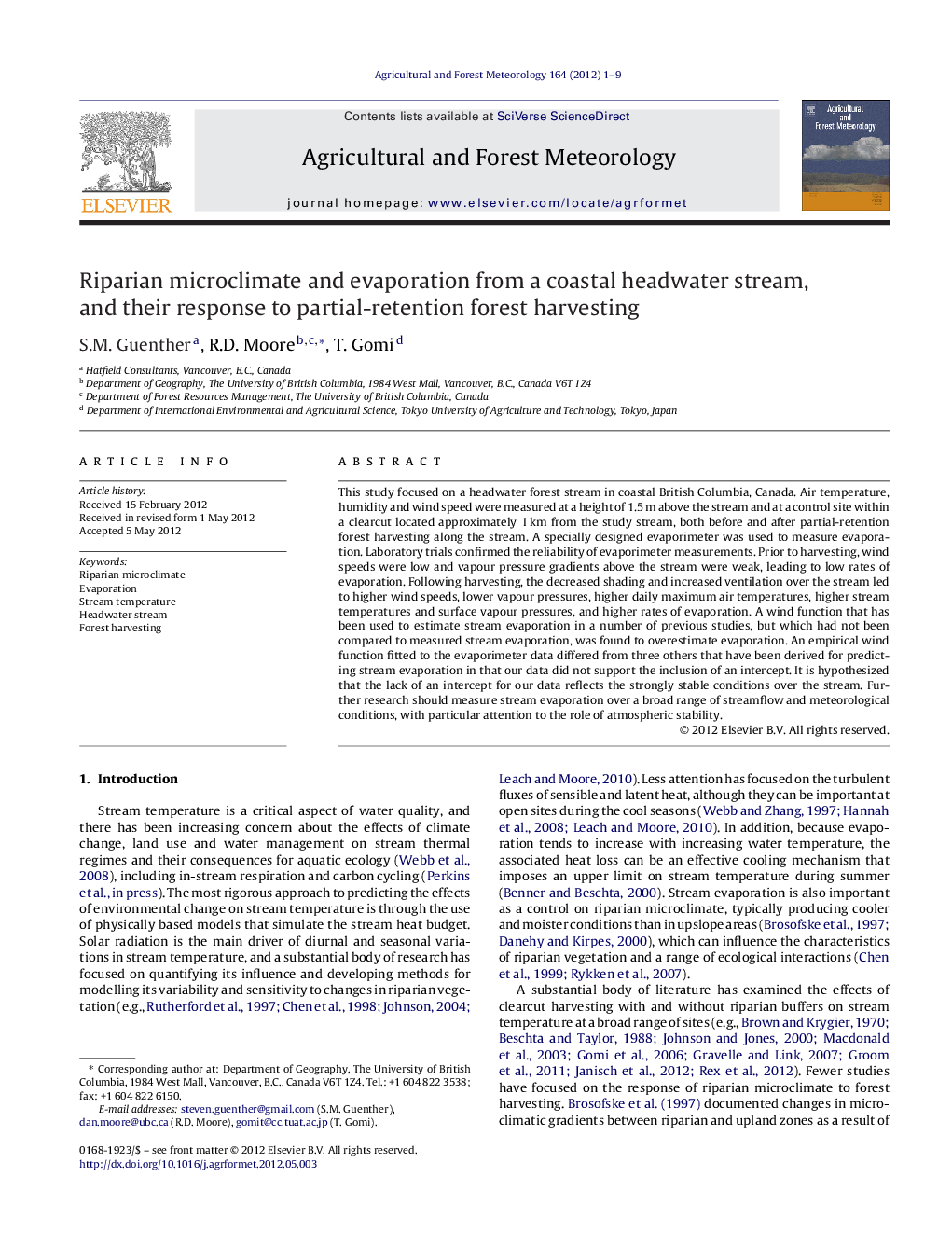| Article ID | Journal | Published Year | Pages | File Type |
|---|---|---|---|---|
| 81906 | Agricultural and Forest Meteorology | 2012 | 9 Pages |
This study focused on a headwater forest stream in coastal British Columbia, Canada. Air temperature, humidity and wind speed were measured at a height of 1.5 m above the stream and at a control site within a clearcut located approximately 1 km from the study stream, both before and after partial-retention forest harvesting along the stream. A specially designed evaporimeter was used to measure evaporation. Laboratory trials confirmed the reliability of evaporimeter measurements. Prior to harvesting, wind speeds were low and vapour pressure gradients above the stream were weak, leading to low rates of evaporation. Following harvesting, the decreased shading and increased ventilation over the stream led to higher wind speeds, lower vapour pressures, higher daily maximum air temperatures, higher stream temperatures and surface vapour pressures, and higher rates of evaporation. A wind function that has been used to estimate stream evaporation in a number of previous studies, but which had not been compared to measured stream evaporation, was found to overestimate evaporation. An empirical wind function fitted to the evaporimeter data differed from three others that have been derived for predicting stream evaporation in that our data did not support the inclusion of an intercept. It is hypothesized that the lack of an intercept for our data reflects the strongly stable conditions over the stream. Further research should measure stream evaporation over a broad range of streamflow and meteorological conditions, with particular attention to the role of atmospheric stability.
► A newly designed evaporimeter was used to measure evaporation from a small stream. ► Forest harvesting modified riparian microclimate and increased stream evaporation. ► A commonly used wind function overestimated stream evaporation. ► Strongly stable conditions, even after logging, limited stream evaporation.
